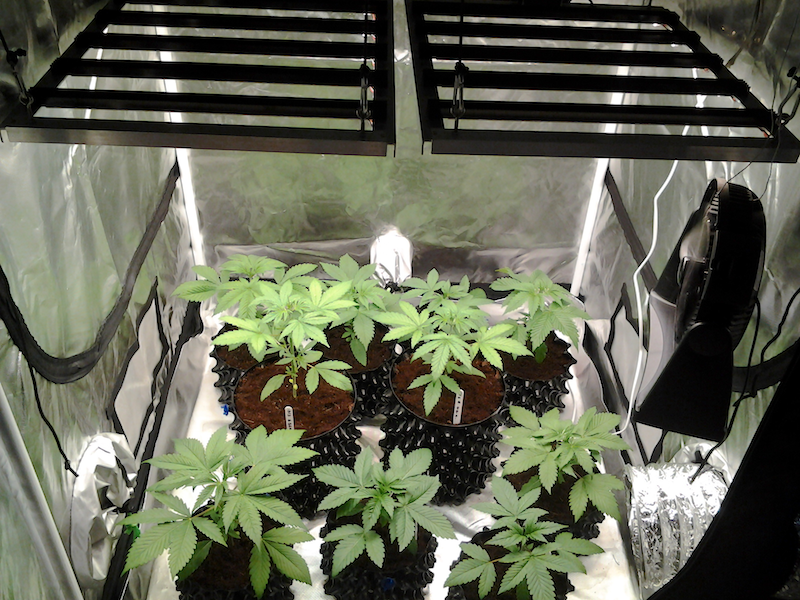
The most common question gardeners have when considering a SolStrip system is, how much light do they need for their space? Because LEDs are so much more efficient than high-intensity discharge (HID) and florescent lights, the traditional rules of thumb for light intensity, expressed in watts per square foot, aren’t applicable to SolStrip systems.
Current state-of-the-art white LEDs are up to 50% more efficient than HID lamps such as metal halide and high-pressure sodium lights. That huge boost in efficiency not only means more light per watt consumed, but also less heat given off by the lamp. SolStrips leverage that efficiency further with distributed diode technology, which spreads the light emitters, and the heat, across a much larger area than HID lamps or even COB lights.
Together that means that SolStrip lamp systems deliver more light per watt and can be placed much closer to the canopy, where they will deliver that light much more evenly and coolly than HID lamps. All of these factors must be considered when estimating light needs using SolStrips.
Rule of Thumb: 35 w/sf
The rule of thumb you should use when planning a SolStrip system is 20-30 watts of light per square foot for vegetative spaces, and 30-40 w/sf for bloom spaces. For a mixed veg/bloom space use 35 w/sf. These are fairly broad ranges admittedly, but be wary of operating outside of them. Below 20 w/sf will result in stretching and thinning of vegetation; above 40 w/sf can lead to bleaching and die-off of tops.
This rule of thumb presumes several conditions:
- The watt total is operating watts, not potential watts. SolStrip X2’s have the potential to deliver 48 watts of light per strip, but most gardeners will operate them softer in the 33-42 watt range. Use the operating wattage for your calculations.
- The light system will be positioned 12” above the canopy. The physics of light means that its strength decreases exponentially with increasing distance. Positioning your lights 18” above the canopy will only give you 50% of the intensity of the same lights at 12”, at 24” your lights with deliver only 25% of the intensity at 12”. Conversely, positioning your light 6” above the canopy (very possible due to SolStrips’ very low heat) will double your light intensity from 12”.
- The light system will be designed to distribute the SolStrips evenly across the growing space. SolStrip LEDs emit light in vertical cone of about 120 degrees. No light is wasted as in HIDs by being sprayed in a 360 degree pattern that must be reflected back onto the canopy, with all the waste and weakening of intensity that results. But that means SolStrips must be aimed directly at the canopy from directly above.
Practically speaking, that means you can estimate coverage for SolStrip systems using 30 w/sf and running your system at 100% of potential output:
- SolSheet Original: 5 sf, with a 36” x 20” footprint
- SolSheet X: 8 sf, with a 42” x 28” footprint
- SolSheet DBLX: 16 sf, 48″ x 48″ footprint at 18″ vertical height
- SolStix Rax DBLX array of twelve X2 or eight X3 strips: 25 sf, with a 60” x 60” footprint at 18″ vertical height
These are guidelines only. If you plan to run your lights softer, or higher than 12”, you’ll need to account for that in your estimate. For those willing to do a little math, there are better measures of photonic energy, i.e., light, that will deliver more accurate calculations based on values such as PAR and PFFD. We will explore those in a future post. But for basic planning in a typical indoor gardening space you can use these calculations with confidence.